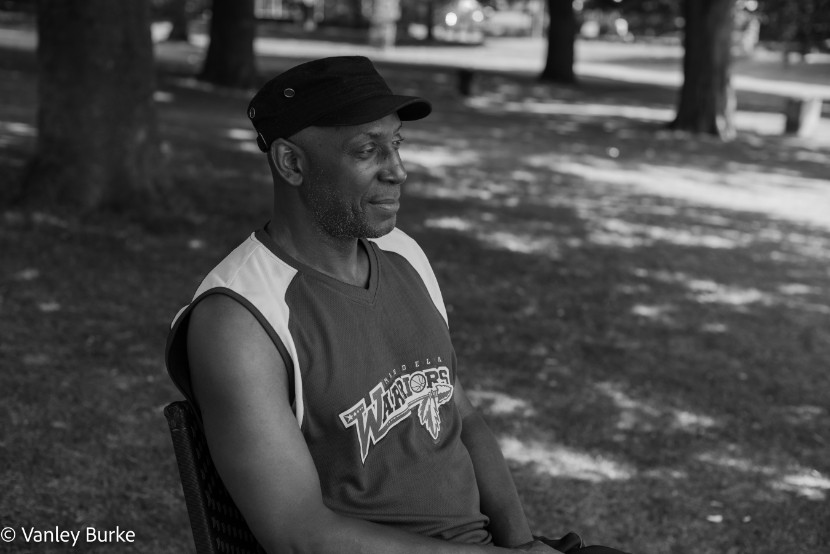
11 Mar 2024
Inspiring photos capture community’s park life
The unique connection forged between a generation of Leeds young people and their beloved local park has been captured in a series of inspiring photos taken decades apart.
The fascinating collection features pictures of second generation West Indians taken in the 1970s and 80s, along with a series of contemporary portraits and their individual memories of growing up in Leeds.
Each of their photos from past and present have been added to a new, specially curated online gallery on the Leodis archive thanks to a partnership between the Jamaica Society Leeds and Leeds Libraries.
The pictures were taken for the Rebellion to Romance exhibition as part of the Jamaica Society Leeds Out of Many Festival.
Captured by renowned photographer Vanley Burke, known as the 'Godfather of Black British photography’, the modern portraits were each taken at Potternewton Park, a social hub where the young black people of Chapeltown and others from around the city would come together on Sundays each summer.
Vanley Burke said: “Potternewton Park was the ideal place to photograph the second-generation because of their affinity with the space. This was where they went on Sundays, walked to and from school, played football, rounders and cricket, dated and, most importantly, celebrated their annual Carnival.
“I was interested in the African Caribbean community’s resistance to racism. Placing them in the park wasn’t just about a place to have fun. Whether they were aware or not, gathering there was a form of coping and resistance.”
Individuals featured in his photos include a sharply dressed Joan Fishley, whose studio portrait taken in the mid-1980s shows her in a tuxedo, reflecting her family’s background in tailoring and fashion.
She said: “Potternewton Park on Sundays was the place to be. I had to make sure my Sunday dinner was cooked because I never knew what time I’d get in!”
Also featured is Homer Harriott, who along with his band Bodecian, performed at the 1981 Rock Against Racism Carnival in Potternewton Park.
He said: “I wore my brother’s graduation gown over an all-in-one yellow tracksuit - like one of my heroes Bruce Lee wore. I can’t imagine what I looked like on stage!”
Another image shows Norman Francis, a youth basketball coach who set up under 16s and under 18s teams in Chapeltown and still helps local young people through sport today.
He said: “I remember about 40 guys playing football in Potternewton Park with one ball and the girls up on the hill playing rounders.”
The photos are featured alongside other images from the Rebellion to Romance exhibition, which explored the lives of young West Indian people coming of age in 1970s and 80s Leeds and looked at how they embraced both their Caribbean roots and their Black British identity whilst making their own way in the city.
Rebellion to Romance was seen by over 25,000 visitors including King Charles who visited the exhibition in 2022, meeting contributors and members of the city’s West Indian community.
Susan Pitter, who curated Rebellion to Romance and the new gallery, said: “Black communities are woven into the fabric of Leeds and yet we are underrepresented in the public archives. Without us we do not see a true reflection of our city and its history.
“That’s why the creation of this new gallery is to be applauded. It puts our presence, lives and experience of the social, civic and cultural life of Leeds at the heart of its story.
“Our hope is that the Rebellion to Romance collection will be added to over time so that our parents and grandparents – the Windrush Generation and the inspirational men and women who came before them – and all those who arrived after, become an integral part of the Leodis archive’s storytelling of Leeds too.”
The Leodis archive features more than 70 thousand photographs documenting the history of Leeds, with people able to add their own pictures and memories.
Councillor Mary Harland, Leeds City Council’s executive member for communities, said: “These fantastic images capture a series of important moments in time for a generation which has made a hugely important, and lasting contribution to life in Leeds.
“Adding them to our Leodis archive is also an important step towards ensuring the contributions of all communities are represented and preserved permanently as part of our city’s unique historical record.”
As well as sharing photos, Leodis also invites people form Leeds to share memories and contribute their stories from this key period in the city’s history.
To view the gallery in full, please visit: https://www.leodis.net/viewguidedtourimage/1020
ENDS
For media enquiries contact:
Leeds City Council Communications team
communicationsteam@leeds.gov.uk